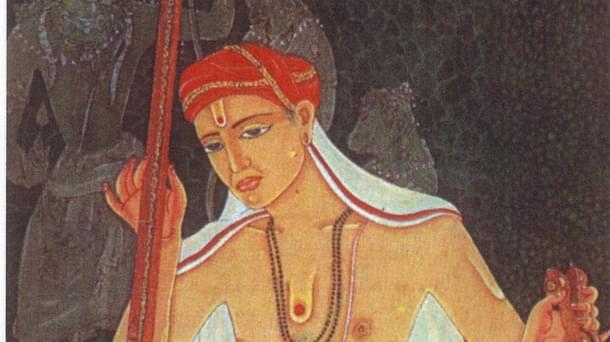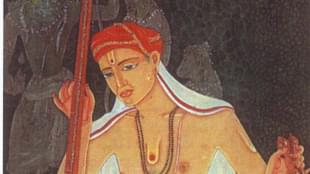Commentary
Who Owns Thyagaraja: The Legal Angle
Saideepak
Oct 13, 2014, 06:28 PM | Updated Apr 29, 2016, 12:40 PM IST
Save & read from anywhere!
Bookmark stories for easy access on any device or the Swarajya app.


There indeed is a legal framework in place to preserve common cultural resources
I read with a lot of interest Mr. Keerthik Sasidharan’s beautifully written piece “Who owns Thyagaraja?” which raises important questions about private ownership of common cultural resources and heritage. As a student and practitioner of, inter alia, Intellectual Property Law, the issue is of natural interest to me and I hope to address some of the concerns raised in Mr Sasidharan’s post (for those interested, here’s the link to my blog on IP/Trade Laws, The Demanding Mistress).
When discussing a legal issue, it always helps to separate questions relating to what the law “is” and what it “ought” to be since the “ought” questions are usually musings on policy which will hopefully lead to legislative mechanisms at some point in the future. In order to understand the “ought”, it is imperative to know the “is”. So what is the current position of the law of copyright on ownership of compositions of legends such as Thyagaraja, Muthuswami Dikshitar and Syama Sastri (the Trinity of Carnatic music)?
The Copyright Act, 1957 (which is the current legislation having been recently amended in 2012) recognizes subsistence of copyright only in the following classes of work: original literary, dramatic, musical and artistic works, cinematograph films and sound recordings.
Had Thyagaraja been alive today, the lyrics of his Kritis and the tunes to which they are set would have been entitled to protection as literary and musical works respectively. If he had performed in a concert, he would have enjoyed performer’s rights and had it been recorded, the sound recording of the performance would have enjoyed copyright as a sound recording.
If a video recording had been made of the performance, it would have enjoyed protection as a cinematograph film. Each of the works would have had protection for as long as he would have been alive, plus 60 years. In addition, the company with the right to broadcast the performance or the video recording would have enjoyed broadcast rights under the Act.
At the time of Thyagaraja’s attainment of heavenly abode in January 1847, there was no copyright Act in India. The first rudimentary one to be introduced was the Copyright Act of 1847 in December 1847 followed by a relatively comprehensive version in 1914 (which was an extension of the UK counterpart of 1911). Under the 1847 Act, of whose manner of enforcement and interpretation not much is clear, copyright subsisted until the death of the author plus seven years and could not in any situation go beyond a maximum term of 42 years from the date of its publication. Therefore, under the 1847 Act, Thyagaraja’s works, which were published during his lifetime, were protected until 1854. Those of his works which were published after his death, would have enjoyed copyright for 42 years from the year of their first publication. In any case, it does not appear that there is any work of Thyagaraja in which copyright still survives. Does it mean that his works or their translations are open for appropriation by any third party? The answer is a clear and emphatic ‘no’ and it is not possible for a third party, unless it resorts to mischief, to lay claim to the compositions of Thyagaraja.
Even if a third party resorts to mischief, Thyagaraja rasikas are not without remedy under the law since the dubious claim of ownership can be challenged in a court of law. Importantly, even after the expiry of the copyright in a work or wherein no copyright subsisted in the first place such as Thyagaraja’s works, the author continues to have the right to have his authorship acknowledged.
Therefore, if an artist passes off a certain Thyagaraja work as his own without necessarily preventing others from using the tune, it is still possible for the author or his descendants or other legal representatives of the author to demand attribution for the original author/composer.
For instance, readers may recollect the recent controversy involving allegations of plagiarism by the Irayimman Thampi Smaraka Trust against the song “Pi’s Lullaby” rendered by Bombay Jayashri in the film Life of Pi, alleging that the song was word-by-word translation of Irayimman Thampi’s Malayalam lullaby Omanathinkal Kidavo. Although one can’t comment on the veracity of the claims in that case, the point is the law is not toothless to address the situation.
The question then is, what do recording companies claim rights over? They claim rights over the rendition of the Kritis by their artists. In other words, that specific performance is what they are entitled to claim exclusivity over. Therefore, if an enthusiastic rasika were to make pirated versions of the same audio recording, or unauthorisedly uploads the video of the entire performance or a substantial portion of it, owners of the sound recording rights and the performance have a legitimate right to object to it and to demand a “take down” of these unauthorized versions from channels such as YouTube.
The critical caveat is that the rights of owners are subject to important limitations imposed on them under the heads of “fair use” and “fair dealing” by the Copyright Act itself. In other words, the Act recognizes certain limited windows of non-infringing use by third parties without the consent of the right owner. Unless and until an uploader of a video or a sound recording can really peg his use under these heads of “fair use/fair dealing”, it cannot be his case that he is entitled to upload them merely because the Kritis being rendered are that of Thyagaraja.
This, in a nutshell, is the position of copyright law as it stands today. I have not addressed other possible and plausible scenarios for they may not be immediately relevant to the broad issue at hand. In light of the above, if any music company goes to the ludicrous extent of asserting its rights over the lyrics and the original tune composed by Thyagaraja against a legally uninformed party, that wouldn’t really point to a deficiency in the law. It would only demonstrate the absolute lack of scruples and respect for heritage on the part of the music company, and ignorance of his rights on the part of the recipient of a copyright infringement notice.
Besides the law of copyright, there are safeguards in the Patents Act, 1970 to prevent traditional knowledge from being patented. In fact, the Council for Scientific and Industrial Research (CSIR) in collaboration with the Department of AYUSH (Ayurveda, Yoga and Naturopathy, Unani, Siddha and Homoeopathy) has created a Traditional Knowledge Digital Library (TKDL) for use by the Indian Patent Office to pre-empt grant of patents over traditional knowledge. Importantly, India also has a law to protect tangible aspects of our culture under the Geographical Indications Act, 1999.
Therefore, it wouldn’t be an overstatement to say that there is a legal framework in place to preserve common cultural resources.
Can we do more to protect not just the resources, but also our way of life? Of course we can, and I have written earlier on the rights of indigenous cultures in Swarajya’s earlier avatar as Centre Right India. Are there efforts to create an international instrument which addresses the issue? Yes and I had addressed the issue in a paper I had written (as a law student in 2008, which explains the lack of polish). In the paper, I had drawn attention to the Sixth Report of the Intergovernmental Committee on Intellectual Property and Genetic Resources, Traditional Knowledge and Folklore (here’s the link) that defines “Traditional Cultural Expressions (TCEs)” and “Intangible Cultural Heritage”. Critically, TCEs include traditional music, performance, narratives etc.
If we are indeed serious about protecting our heritage, there must be proactive governmental and non-Governmental effort to put forth Indian perspectives before the intergovernmental committee on protection of TCEs to prevent misappropriation by vested interests. We have a history of playing the victim and crying hoarse about being taken for a ride after bungling up in treaty negotiations because of lack of preparedness and initiative on our part. Considering that preservation of indigenous cultures has a bearing on our identity, it is in our interest to show a modicum of spine (read political will), enterprise and presence of mind in securing our interests during the negotiations on the treaty to protect traditional cultures. For a change, let us not take pride in being the ill-prepared well-meaning underdogs.
Importantly, it is only logical and right that instead of letting Left-leaning airheads exploit indigenous sentiments and issues for their vested interests, the Indian Right must take up cudgels on behalf of India’s indigenous people to protect what rightfully belongs to this land. In fact, the stellar group of writers on Swarajya could contribute by putting together a policy paper which could be shared with the Government for its consideration and our erudite readers can chip in too.
Sai is an engineer-turned-Advocate, High Court of Delhi. He is founder of the “blawg” “The Demanding Mistress” and tweets @jsaideepak.





